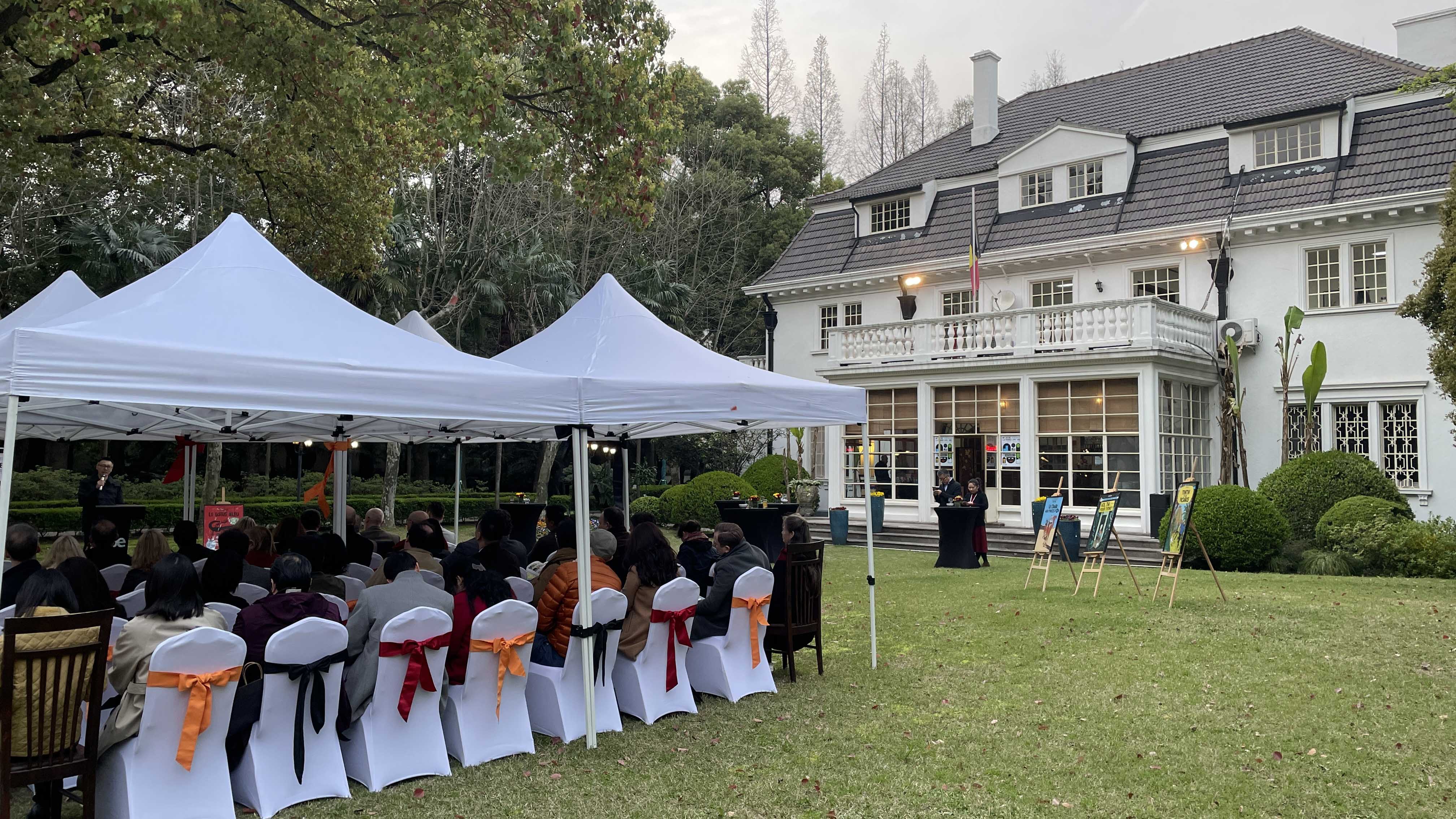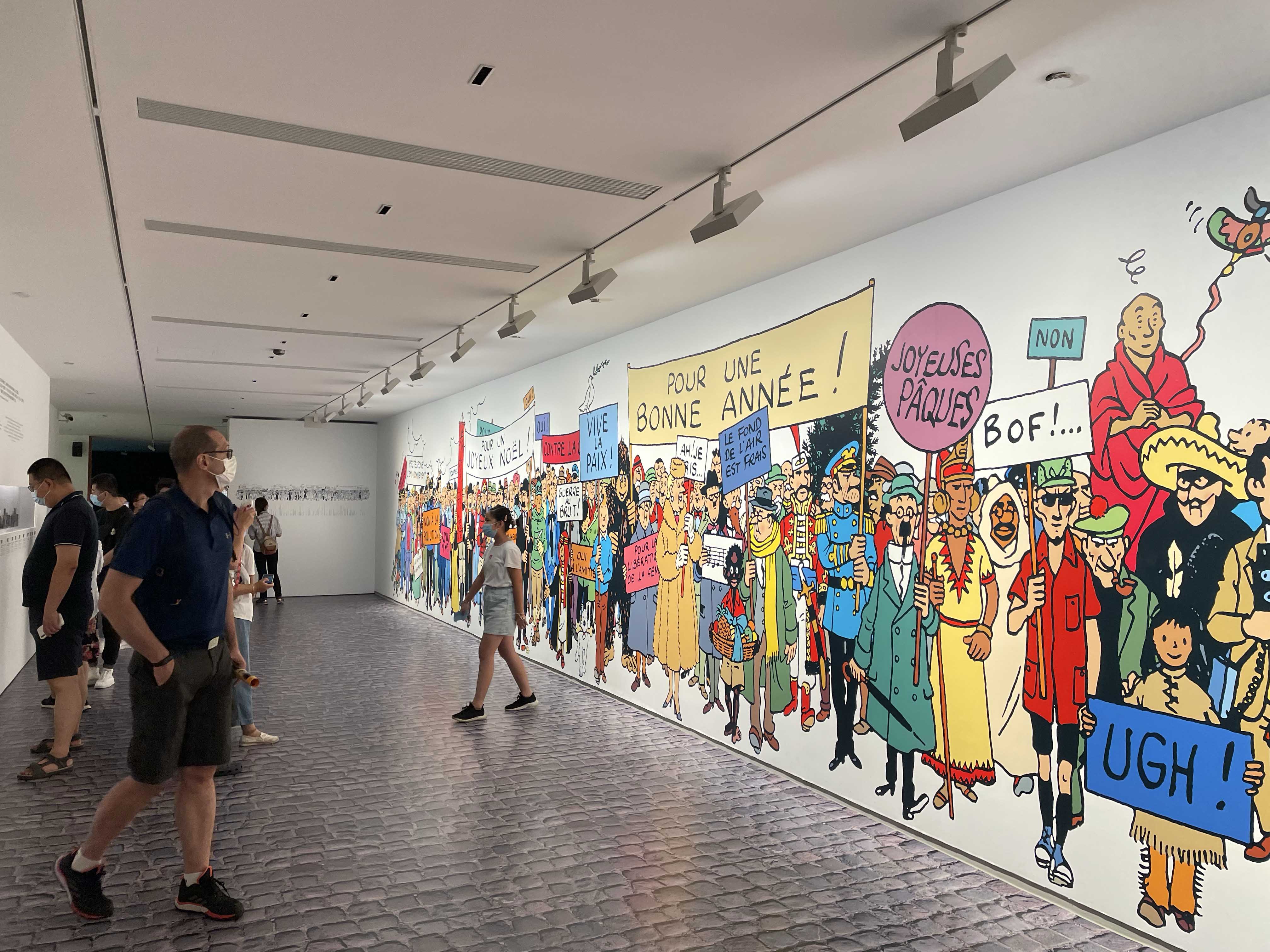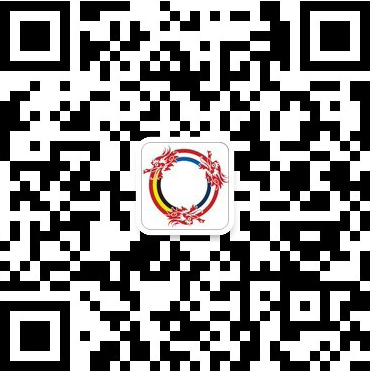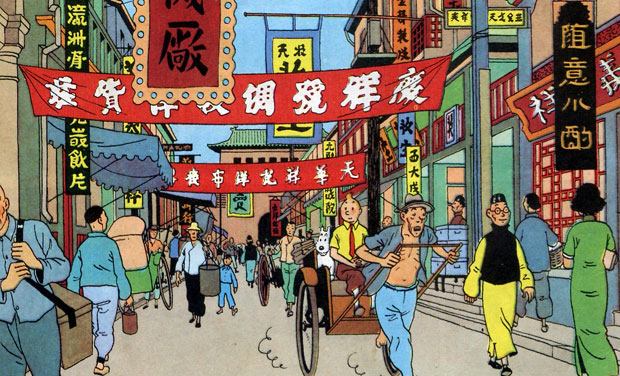Belgium's 'ambassador to China' since 1937
On January 10, 1929, Tintin made his debut in the pages of the Belgian weekly Le Petit Vingtieme. Since then, the adventurous reporter and his faithful dog Snowy have become a beloved cultural icon. In countries like France, Belgium, and Switzerland, it's almost a rite of passage for children to read at least one Tintin story, and the comic books, known as "bandes-dessinées" or BDs in French, are ubiquitous in bookshops, libraries, and homes.
However, Tintin's popularity extends far beyond French-speaking countries. The books have been translated into over 120 languages, from Bahasa to Arabic to Hungarian to Latin, and an animated TV series aired around the world in the 1990s. Tintin memorabilia shops can be found in places like Singapore, Iran, Turkey, and even Sudan.
On March 27th, the Chamber team was invited to a conference on Tintin "When Zhang Chongren met Hergé and Tintin", held by Philippe Yue Wang from Tintinimaginatio China at the Consulate-General of the Kingdom of Belgium in Shanghai.
Tintin in China
One of the most interesting connections to Tintin is China. "The Blue Lotus," published in 1936, remains one of author Hergé's most acclaimed works. It features Tintin traveling to Shanghai to dismantle an opium-smuggling ring against the backdrop of Japan's invasion of China. Hergé modeled one of the book's characters, Chang, after a real-life Chinese friend. Today, Tintin, or 丁丁 (Dīngdīng) in Mandarin, is a thriving business in China. Out of the three to four million albums sold worldwide annually, 1.5 million are sold in China alone, according to the long-time publishers of Tintin books and other BDs, Casterman. Since the first Tintin book was published in 1931, a total of 250 million copies have been sold globally.

Officially, Tintin was not published in mainland China until 2001, but pirated copies helped build a following even before the books were widely available. Chinese readers in their 40s and 50s still reminisce about Tintin's adventures in exotic locales, from fighting gangsters in Chicago to navigating the deserts of the Middle East, facing execution squads in Latin America, and even traveling to the moon. Li Tong, the chief editor of Tintin books at China Children's Press and Publication Group, stated that Tintin "opened a window onto the entire world" for Chinese readers who were unable to travel outside the country in the 1980s.
The Blue Lotus: not just a comic book
The story between Hergé and Zhang Chongren revolves around Tintin's adventure "The Blue Lotus," which is set in China. Hergé had previously received criticism for his portrayal of non-European characters in the Tintin series, and he wanted to make sure that he accurately depicted Chinese culture in "The Blue Lotus."
To ensure that his portrayal of China was accurate, Hergé met with Zhang Chongren, a young Chinese student studying in Belgium. Zhang Chongren became Hergé's advisor and helped him to better understand Chinese culture, customs, and traditions. Zhang Chongren not only helped with the research but also with the writing of the story itself, providing Hergé with a deep insight into the Chinese way of life and culture.
The collaboration between Hergé and Zhang Chongren had a profound impact on the Tintin series and their relationship paved the way for the creation of a strong bond between Belgium and China. This bond was further strengthened when Zhang Chongren returned to China and became a celebrated artist in sculpture and painting.
Today, "The Blue Lotus" is regarded as one of the most culturally sensitive and accurate portrayals of China in Western literature. The story has also helped to promote a better understanding between the people of Belgium and China.



